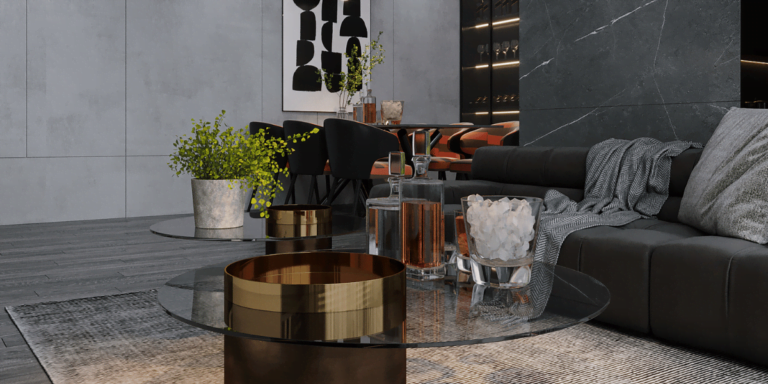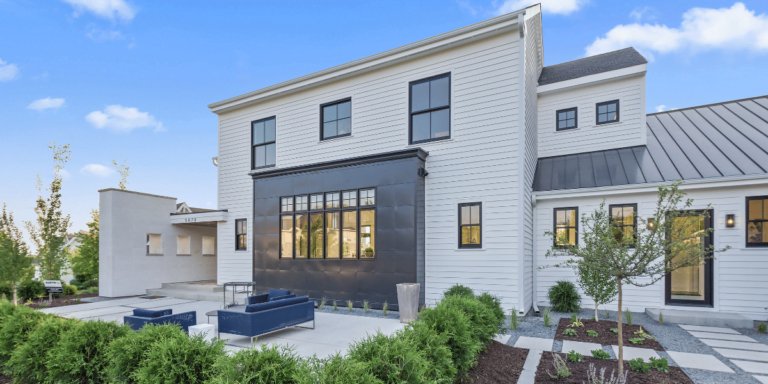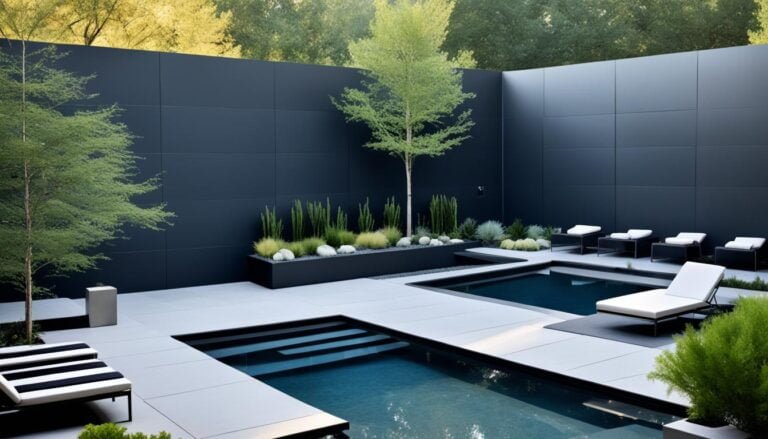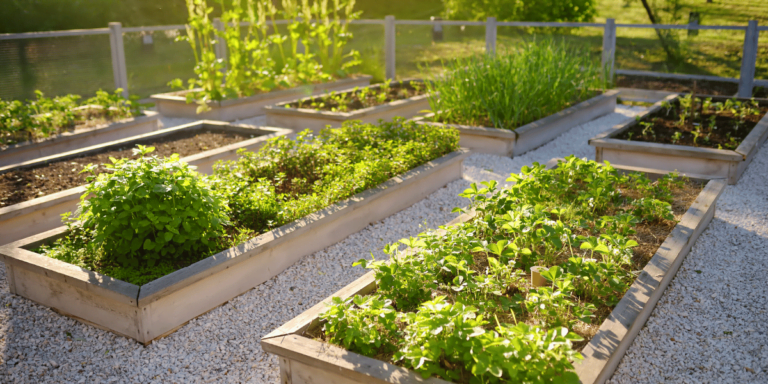Rooftop and balcony gardens are a growing trend in urban environments, offering a way to utilize space and bring nature back to cities. Whether you have a rooftop garden or a balcony garden, choosing the right materials is essential for creating a thriving and beautiful green space.
When it comes to roof garden materials, there are a few key factors to consider. Firstly, you need to think about the type of garden you want to create. Do you want a rooftop garden or a balcony garden? Each has its own unique considerations and requirements.
For rooftop gardens, you’ll need to think about building regulations, weight capacity, and the strength of your roof. Balcony gardens, on the other hand, may have different design considerations and space limitations. It’s important to evaluate these factors before getting started.
Additionally, you’ll want to think about the type of plants and vegetation you plan to grow in your roof garden. Different plants have different needs, so selecting the right growing medium is crucial. Factors such as drainage, water retention, and weight should all be taken into account.
Key Takeaways:
- Consider if you want a rooftop garden or a balcony garden.
- Check building regulations and weight capacity before starting your garden.
- Select the right growing medium for your plants’ needs.
Benefits of Rooftop and Balcony Gardens
Rooftop gardens and balcony gardens offer a multitude of benefits, making them a popular choice for urban gardening enthusiasts. Let’s explore the advantages of these green spaces in more detail:
Rooftop Gardens
- Protection from temperature fluctuations: Rooftop gardens act as insulators, reducing the need for excessive heating and cooling in buildings. This not only lowers energy costs but also contributes to a more sustainable environment.
- A private oasis above the urban landscape: With rooftop gardens, you can create your own serene retreat away from the hustle and bustle of the city. It’s the perfect place to relax, unwind, and connect with nature.
- Opportunity for growing food: Rooftop gardens provide space for growing your own fruits, vegetables, and herbs. You can enjoy fresh and organic produce right at your fingertips.
- Enhancing urban biodiversity: By cultivating a rooftop garden, you can contribute to the preservation and promotion of urban biodiversity. Plants attract bees, butterflies, and birds, adding vibrant life to the concrete jungle.
- Improving air quality: Rooftop gardens help trap allergens and airborne particles, improving the overall air quality in their vicinity. This leads to a healthier living environment for both humans and wildlife.
- Reducing stormwater runoff: The vegetation in rooftop gardens aids in absorbing rainwater, reducing stormwater runoff rates and volumes. This helps prevent flooding and minimizes the strain on drainage systems.
- Adding value to the property: Beyond the aesthetic appeal, rooftop gardens add value to properties. They provide additional usable space, increasing the desirability and marketability of the property.
Balcony Gardens
- Aesthetic appeal: Balcony gardens enhance the visual charm of your living space, adding lush greenery and vibrant colors. They create a beautiful backdrop for relaxation and socializing.
- Buffer against noise pollution: The plants in balcony gardens help absorb sound, acting as a natural buffer against noise pollution. This brings a sense of tranquility and peace to your balcony oasis.
- Private retreat: Balcony gardens offer a private outdoor retreat within the confines of your home. It’s a place where you can escape the rigors of everyday life and find solace in nature.
- Cooling effect during hot weather: The foliage of balcony gardens provides shade and reduces the ambient temperature. This natural cooling effect can make your balcony a comfortable space even on scorching summer days.
- Potential food source: With careful planning and selection of plants, your balcony garden can yield a variety of edibles. Imagine plucking fresh herbs or cherry tomatoes straight from your own balcony farm.
Whether it’s a rooftop garden or a balcony garden, these green spaces not only bring nature closer to urban dwellers but also offer a range of tangible and intangible benefits. From energy efficiency to improved mental well-being, the advantages of rooftop and balcony gardens are worth exploring.
Building a Rooftop Garden
Building a rooftop garden involves several important steps. Firstly, it is important to obtain approval from the relevant authorities for building permission. Additionally, checking and adhering to building regulations and any restrictions that may apply is crucial.
The weight capacity of the roof plays a vital role in determining whether a rooftop garden can be constructed. It is necessary to have a qualified professional assess the roof’s weight capacity to ensure it can support the additional weight of the garden. This assessment helps determine whether an extensive or intensive roof garden can be built.
Designing the garden is an essential aspect of rooftop gardening. It involves considering various factors such as:
- Shade: Assessing the amount of shade that the roof receives is crucial in selecting suitable plants.
- Wind: Evaluating the wind conditions will help determine the need for windbreaks or the placement of wind-resistant plants.
- Privacy: Incorporating suitable privacy solutions, such as trellises or plantings, ensures a comfortable and secluded space.
- Access: Planning for safe and convenient access to the rooftop garden is necessary for maintenance and enjoyment.
- Electrical wiring: Ensuring proper electrical connections for lighting, water features, or other garden elements.
- Irrigation: Implementing an efficient irrigation system that suits the garden’s water needs.
- Drainage: Designing effective drainage solutions to prevent water accumulation and roof damage.
- Waterproofing: Installing a reliable waterproofing system to protect the roof from moisture and leaks.
- Storage: Allocating space for gardening tools, potting materials, and other essentials.
Considering the climate and theme of the garden is also important when choosing plants and their housing. Selecting plants that are suitable for the rooftop environment and align with the desired garden aesthetic creates an inviting and harmonious space.
| Factors to Consider When Building a Rooftop Garden | Steps to Follow |
|---|---|
| Obtaining building approval | 1. Consult with the relevant authorities for building permission details. |
| Checking building regulations and restrictions | 1. Research and understand the specific building regulations and restrictions that may apply. 2. Comply with any necessary requirements. |
| Assessing weight capacity | 1. Hire a qualified professional to assess the weight capacity of the roof. 2. Ensure the roof can support the additional weight. |
| Designing the garden | 1. Consider factors such as shade, wind, privacy, access, electrical wiring, irrigation, drainage, waterproofing, and storage. 2. Create a detailed plan for the garden layout and features. 3. Select plants and their housing to suit the climate and desired theme. |
Selecting the Right Growing Medium
The choice of a suitable growing medium is crucial for rooftop gardens. While soil alone can be difficult to work with and may contain contaminants, manufactured soilless media offer a better option. One popular choice for rooftop gardens is peat-based growing media. These media are known for their high air porosity, good drainage, and water retention properties.
However, peat-based media can dry out quickly and compact over time, affecting the health of plants. To improve their performance, it is recommended to amend peat-based media with mineral aggregates or other materials like bark. This helps enhance their aeration, reduce compaction, and slow down the drying-out process.
Expert Tip: Mix peat-based growing media with mineral aggregates or bark to improve aeration, reduce compaction, and slow down drying out.
Another option for rooftop gardens is chunk coir-peat growing media. These media offer good aeration, less compaction, and slower drying out. They provide an alternative to peat-based media, especially for those looking for a more sustainable option.
Additionally, compost can be a valuable ingredient in the growing medium. It helps improve water retention and adds essential nutrients to support plant growth. However, it’s important to maintain proper aeration in the growing media by limiting the compost content to 10% of the total volume.
Expert Tip: Blend compost into the growing medium to enhance water retention and provide nutrients. Ensure the compost content does not exceed 10% to maintain proper aeration.
By selecting the right growing medium for rooftop gardens, you can create an environment that promotes healthy plant growth and maximizes the potential of your rooftop garden.
| Growing Medium | Air Porosity | Drainage | Water Retention | Additional Considerations |
|---|---|---|---|---|
| Peat-Based Growing Media | High | Good | Good | Amend with mineral aggregates or bark to improve performance |
| Chunk Coir-Peat Growing Media | Good | Good | Good | Sustainable alternative to peat-based media |
| Compost | N/A | N/A | Improves water retention | Limit compost content to 10% to maintain proper aeration |
Rooftop Garden Flooring Materials

Creating a rooftop garden is not just about the plants and design; the choice of flooring material plays a crucial role in making the space comfortable, functional, and safe. When selecting flooring materials for your rooftop garden, consider factors such as cushioning, durability, slip-resistance, drainage, and ease of maintenance.
Cushioned Flooring
For gardeners who spend extended periods standing or kneeling in their rooftop gardens, cushioned flooring is a popular choice. This type of flooring provides relief and support, reducing the strain on your joints and muscles. It allows you to tend to your plants with greater comfort, making gardening a more enjoyable experience.
Durable Flooring
Rooftop gardens are exposed to various weather conditions, including intense sunlight, rain, and snow. Therefore, it’s essential to choose flooring materials that can withstand these elements. Opt for durable flooring options that are specifically designed to handle outdoor environments. These materials should be able to resist fading, cracking, and warping, ensuring that your rooftop garden remains visually appealing and functional for years to come.
Slip-Resistant Flooring
Safety is paramount when designing a rooftop garden. To prevent slips and falls, especially in wet or slippery conditions, choose slip-resistant flooring. This type of flooring is designed to provide ample traction, reducing the risk of accidents. Consider materials with textured surfaces or special coatings that enhance grip and prevent slipping.
Drainage and Perforations
Proper drainage is crucial in a rooftop garden to prevent water pooling on the surface. Look for flooring materials with perforations or gaps that allow for automatic drainage. These perforations help water flow through the flooring, preventing stagnant water buildup that can damage the plants or compromise the structural integrity of the garden. Additionally, flooring with perforations allows for adequate aeration, promoting healthy root growth.
Easy-to-Clean Flooring
Maintaining cleanliness in your rooftop garden is essential for both functionality and aesthetics. Choose flooring materials that are easy to clean and maintain. These materials should resist stains and be able to withstand regular cleaning without losing their appearance or structural integrity. This will ensure that your rooftop garden remains hygienic and visually appealing.
Lightweight and Secure
Given the exposed nature of rooftop gardens, lightweight flooring materials are highly recommended. Lightweight materials are easier to handle during installation and pose less risk of damage to the roof structure. They are also less likely to blow away during strong winds, ensuring the longevity and stability of your rooftop garden.
Incorporating the right flooring materials into your rooftop garden is crucial for creating a space that is both functional and aesthetically pleasing. Consider the needs of your gardeners, the weather conditions, safety requirements, and drainage considerations when selecting the perfect flooring for your rooftop oasis.
| Pros | Cons |
|---|---|
| Cushioned flooring provides comfort and support for extended gardening sessions. | Some cushioned flooring materials may require periodic replacement or maintenance. |
| Durable flooring withstands weather conditions and maintains its appearance over time. | Durable flooring materials may be more expensive than less durable options. |
| Slip-resistant flooring reduces the risk of accidents, promoting safety in the garden. | Special coatings or textures may need to be reapplied over time to maintain slip resistance. |
| Drainage and perforations prevent water pooling, promoting healthy plant growth. | Some perforated flooring materials may accumulate debris, requiring periodic cleaning. |
| Easy-to-clean flooring materials simplify maintenance and ensure hygiene in the garden. | Some easy-to-clean flooring options may show scratches or wear over time. |
| Lightweight flooring materials are easy to handle during installation and less likely to cause damage. | Lightweight flooring may have a lower load-bearing capacity compared to heavier options. |
High-Quality Roof Garden Flooring Tiles

When it comes to creating a rooftop garden, choosing the right flooring tiles is essential for both functionality and aesthetics. Black tiles are a popular choice as they allow the plants to take center stage and create a visually pleasing backdrop. Two excellent options for high-quality roof garden flooring tiles are the StayLock Perforated Tile and the Safety Matta Perforated Tile.
StayLock Perforated Tile
The StayLock Perforated Tile is a top choice for rooftop gardens due to its black color and efficient drainage system. The triangle-shaped perforations allow water to flow through easily, preventing any water pooling on the surface. Made from PVC plastic, these tiles are lightweight and easy to handle, making them ideal for DIY installation. Not only do they provide a durable surface for rooftop gardens, but they also create a comfortable and safe area for walking and lounging.
Safety Matta Perforated Tile
For areas around raised garden beds or spaces where cushioning and slip resistance are important, the Safety Matta Perforated Tile is the perfect solution. These black tiles offer a soft and forgiving surface, reducing the risk of injuries from slips and falls. The perforated design provides excellent drainage, ensuring a dry and safe environment. Made from PVC plastic, these tiles are not only durable but also comfortable to walk on.
Both the StayLock Perforated Tile and the Safety Matta Perforated Tile are excellent options for rooftop gardens. Their black color complements the greenery and allows the plants to shine. These high-quality tiles provide the perfect combination of durability, comfort, and safety, making them an ideal choice for creating a beautiful and functional rooftop garden.
Ideal Growing Medium for Rooftop Gardening
When it comes to rooftop gardening, selecting the right growing medium is essential for the success of your garden. The ideal growing medium should have a combination of qualities such as good drainage, good water retention, and lightweight properties. Let’s explore the key characteristics of an ideal growing medium for rooftop gardens.
Good Drainage and Aeration
One of the crucial factors to consider is good drainage and aeration. Rooftop gardens need a growing medium that allows excess water to drain effectively to prevent waterlogging and root rot. Additionally, aeration is important for oxygen to reach the roots and promote healthy plant growth.
Good Water Retention
While good drainage is important, the growing medium should also have the ability to retain water effectively. This helps to ensure that plants have access to moisture during dry periods and reduces the need for frequent watering. It’s a balancing act between drainage and water retention.
Lightweight Yet Sturdy
Considering the weight capacity of rooftops, it’s crucial to choose a lightweight growing medium. This helps to prevent excessive stress on the structure and ensures the garden remains sustainable. However, lightweight doesn’t mean flimsy. The growing medium should also be sturdy enough to support plant growth and withstand weather conditions.
Additional Considerations
Other factors to take into account when selecting a growing medium include a good cation exchange capacity, resistance to decomposition, and the absence of potential contaminants. These qualities help to create an optimal growing environment for rooftop gardens.
Two popular options that meet many of these criteria are peat-based growing media and chunk coir-peat growing media. Peat-based soilless media provide good drainage and water retention properties, while chunk coir-peat growing media offer better aeration and less compaction. Lightweight clay aggregates or other materials can be added to enhance durability as needed.
Avoid using traditional soil in rooftop gardens as it can be heavy, lacking in drainage, and may contain contaminants that can harm plants.
Now that we understand the qualities of an ideal growing medium, let’s explore the various flooring materials suitable for rooftop gardens in the next section.
Conclusion
Creating rooftop or balcony gardens is an excellent way to bring nature back to urban environments and make the most of unused space. When choosing materials for your roof garden, it’s important to consider factors such as building regulations, weight capacity, and garden design. Additionally, selecting the right growing medium is vital for successful plant growth.
Options for growing mediums in rooftop gardens range from peat-based soilless media to chunk coir-peat growing media. These mediums provide excellent drainage, aeration, and water retention properties, ensuring the plants have the ideal environment to thrive. By carefully considering these factors and designing your garden to meet the specific needs of your space and plants, you can transform your rooftop or balcony into a beautiful urban oasis.
Rooftop and balcony gardens offer numerous benefits, including improved air quality, temperature regulation, increased biodiversity, and even added property value. They also provide an opportunity to grow food, create aesthetic appeal, and offer a private retreat in the midst of the bustling city. By implementing smart design considerations and selecting the right materials, you can create a rooftop or balcony garden that not only enhances your quality of life but also contributes to the sustainability and beauty of urban living.
FAQ
What are the benefits of rooftop and balcony gardens?
Rooftop gardens offer protection from temperature fluctuations, the opportunity to grow food and plants, improved air quality, and added property value. Balcony gardens provide aesthetic appeal, privacy, a cooling effect, and a potential food source.
What should I consider when building a rooftop garden?
When building a rooftop garden, important factors to consider include obtaining building approval, assessing weight capacity, determining garden design, and addressing considerations such as shade, wind, privacy, access, electrical wiring, irrigation, drainage, waterproofing, and storage.
What is the ideal growing medium for rooftop gardens?
The ideal growing medium for rooftop gardens should have good drainage and aeration, as well as good water holding capacity without becoming waterlogged or heavy. Peat-based growing media, such as peat-based soilless media or chunk coir-peat growing media, offer good options.
What flooring materials are suitable for rooftop gardens?
Suitable flooring materials for rooftop gardens include cushioned flooring for comfort, durable flooring that can withstand weather conditions, slip-resistant flooring for safety, and perforated flooring that allows for automatic drainage.
What are some high-quality roof garden flooring tile options?
High-quality roof garden flooring tiles include the StayLock Perforated Tile and Safety Matta Perforated Tile, both made from PVC plastic. These tiles provide durability, comfort, and efficient drainage. Bright-colored tiles, such as the Ergo Matta Perforated Outdoor Tile, can also add a splash of color to vegetable gardens.
How do rooftop gardens benefit urban environments?
Rooftop gardens bring nature back to urban environments, utilize wasted space, improve air quality, promote urban biodiversity, provide a private oasis, and reduce stormwater runoff rates and volumes.
Can I use soil as a growing medium for rooftop gardens?
Soil is not recommended for rooftop gardens due to its weight and potential contaminants. Peat-based growing media or other soilless media options are more suitable.
What are the key considerations when selecting roof garden materials?
Key considerations when selecting roof garden materials include building regulations, weight capacity assessments, and garden design. It is important to ensure compliance with regulations, assess the roof’s ability to support the additional weight, and design the garden to meet the specific needs of the space and plants.










